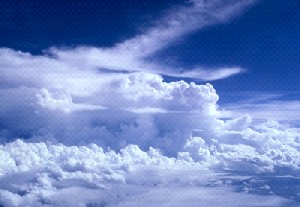 > English > Climate Encyclopaedia > Clouds and Particles > more > 1. What happens in clouds? > * Worksheet 3
> English > Climate Encyclopaedia > Clouds and Particles > more > 1. What happens in clouds? > * Worksheet 3
|
|
||
|
Clouds & ParticlesMore |
|
1. Observation of convection currents using wax candles |
|
Find a candle with a diameter of at least 3-4 cm, light it and let it burn until there is a small pool of melted wax around the wick. Watch the small particles of wick and unmelted wax move around in the pool of wax. Can you see convection currents? How do these currents appear?
|
2. Convection currents in the airInsects are lifted upwards and birds and gliders can soar in the rising air beneath cumulus clouds. The air rises at a speed of about 1 m s-1 under a fair-weather cumulus and rises at 10 m s-1 or more beneath and inside an active cumulonimbus cloud.
|
What does it feel like to ascend at: a) 1 m s-1? Relate this to the speed that a lift goes up. To work out the speed of a lift, divide the height the lift rises when it goes from one floor to another by the time taken to travel this height. c) Is it safe for birds, gliders or indeed any other aircraft, to be caught in the upcurrents of a cumulonimbus cloud?
|
|
|


